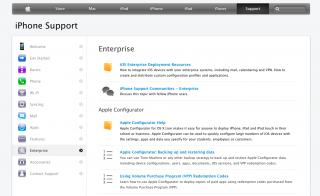What has been rumored for so long has finally become reality. Apple today introduced the iPad or as Apple would put it: the magic experience of the internet. Worldwide product launch will be in March 2010.
Hardware
The iPad is a multi-touch device with a 9.7″ TFT display, without keyboard, but with a design and handling similar to the iPhone. It is run by an ARM 1GHz CPU and comes in flavors of 16, 32 or 64GB flash memory.
Prices
It comes as a WiFi only version or as a WiFi and 3G version.
- iPad 16GB = 499US$ (629US$ incl. 3G)
- iPad 32GB = 599US$ (729US$ incl. 3G)
- iPad 64GB = 699US$ (829US$ incl. 3G)
European prices have not been announced yet. In contrast to the iPhone the iPad seems not to distributed with carrier lock, but still via AT&T in the U.S.
Compatibility
App Store applications are in many cases compatible to the iPad, aswell. An external keyboard can be bought seperately. An e-book store called iBookstore will be available at product launch in march, aswell.
Our opinion
The display size and ease-of-use known from the iPhone will be nice for browsing the web from the sofa. It lacks a camera. The integration into Apple’s eco-system of products and services makes the iPad a danger to Amazon’s Kindle, we suppose.
Sadly from the aspects of an internet device, we suspect it will not support Adobe Flash, as it it rumored to be based on the iPhone kernel, as it prohibits multi-tasking.
This in turn will also mean that the platform will be be utilizing a similar chain of trust like the iPhone. Hello GeoHot? Got some time again after playing with the PS3? A new jailbreak might be required soon ;-)
What missing? Yes, Mr. iGAF. Sadly we haven’t read anything from him yet. But the ultimate test, why the iPad is so inferior to all Microsoft Windows based Slates will come. Be sure, not to miss Uncle Mossheimer on AllThingsD when it’s story time again…
And finally here’s Apple’s iPad propaganda vid. It’s become magical ;-)


